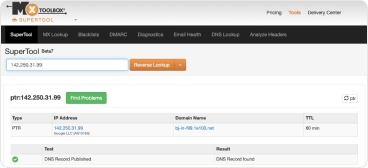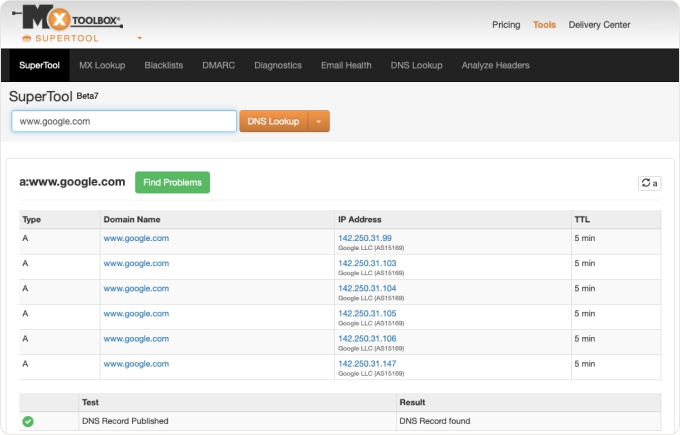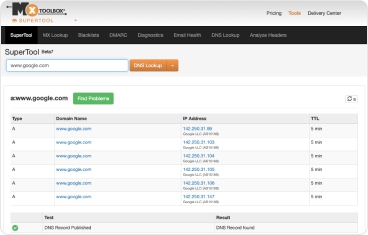Definition
💡 A reverse DNS (Domain Name System) lookup is a computer networking term that refers to determining the domain name associated with a given IP address.
This is the opposite of a standard or “forward” DNS lookup where you query to determine an IP address associated with a specific domain name.
What is the DNS reverse lookup zone?
A DNS reverse lookup zone is a mapping used to point IP addresses to domain names.
How to do reverse DNS lookup
You can perform a reverse DNS lookup using Command Prompt on Windows or Terminal on macOS or Linux using the following commands:
- Command Prompt: nslookup [IP address]
- Terminal: dig -x [IP address]
Additionally, there are online tools that can perform the reverse DNS lookup for you. One such tool is MXToolbox. You simply enter the IP address and click Reverse Lookup to obtain the details.


Which DNS record is used to perform a reverse lookup?
The reverse DNS lookup process uses a PTR (pointer) record which stores the IP addresses.
In IPv4, the address sections are reversed and appended with “.in-addr.arpa” at the end. In IPv6 (the latest version), the IP addresses are converted into four-bit sections and appended with “.ip6.arpa” at the end.
How to check the reverse DNS lookup command
If you want to test the reverse DNS lookup you perform in Command Prompt or Terminal, use the same command and enter the domain name in place of the IP address. The result should match your previous query.
- Command Prompt: nslookup [domain.com]
- Terminal: dig -x [domain.com]
Alternatively, you can use an online tool. Again, MXToolbox offers a forward DNS lookup tool where you enter the domain name and select DNS Lookup in the button’s drop-down menu to view the IP address(es).




